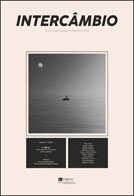Génocide des Tutsi
Monique Bernier et Dominique Celis ont brisé le silence
Resumo
In three months, from April 7 to July 17, 1994, nearly a million Rwandans, mostly Tutsi, were massacred. Survivors of mass crimes are often subjected to an intolerable injunction to silence. In Rwanda, in 2001, some 750 gacaca inspired by the old village assemblies were set up to try all the alleged perpetrators of the genocide. But do victims and witnesses, accomplices and culprits dare to speak? Two Belgian and French-speaking novelists were able to overcome the astonishment and break this silence. But how do you write to overcome shame and horror? Monique Bernier, with Le Silence des Collines (2001), and Dominique Celis, with Ainsi pleurent nos hommes (2022), embark on a story of the genocide, between testimony and novel, between raw language and “literarisation”, two decades apart. By analyzing and comparing the texts of these two women, by confronting them with real events, by trying to understand why and how each succeeds in breaking the silence and what all the silences they evoke mean, we try to show that the two novelists are in chorus to do justice to the victims and, perhaps, to make Rwandans "move on", in a way that is specific to the female gender.
Downloads
Publicado
Edição
Secção
Licença
Intercâmbio - Revista de Estudos Franceses da Universidade do Porto aceita textos de diversa natureza: artigos, recensões, notas de leitura. Os textos poderão ser apresentados em francês ou em português.
Os textos apresentados terão de ser originais, assumindo os autores que não foram publicados, qualquer que tenha sido a sua forma de apresentação. Excecionalmente o Conselho de Redação poderá aceitar trabalhos já publicados, desde que considerados relevantes.
Os textos serão sujeitos a um processo de avaliação com vista à sua possível publicação. A direção de Intercâmbio - Revista de Estudos Franceses da Universidade do Porto, efetuará uma avaliação inicial que tomará em conta a relevância do texto face à linha editorial, a qualidade e o cumprimento integral das normas formais de apresentação estipuladas no presente documento








